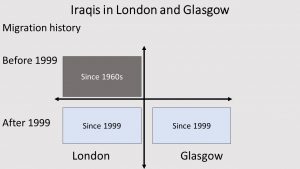Introduction: In the dynamic field of phonetic research, finding innovative ways to collect data can be both a challenge and an opportunity. At our P&P group, Cong, Yanyu, and Damar are taking a leap forward with their latest study, “Gamifying Phonetic Data Collection: An Accent Identification and Attitude Study.” This blog post delves into how they are incorporating gamification into phonetics, transforming the way they understand accents and linguistic attitudes.
The Challenge of Traditional Data Collection: Traditionally, collecting phonetic data has been a straightforward yet often tedious task, both for researchers and participants. Recognizing this, Cong and her colleagues wondered: Could the principles of gaming enhance the data collection process in phonetic studies?
The Innovative Approach: The study is pioneering in its approach, merging the realms of gaming with linguistic research. The core aims include:
- Evaluating the effectiveness of gamified methods in phonetic data collection.
- Investigating the influence of geographical location on accent identification and attitudes.
Gamification in Action: One of the highlights of the project is the use of a game-based study by identifying native English accents used in the speech on the map of the UK. The leader board and the points shown at the end of each block function as the motivations for participants. This innovative tool not only engages participants in a unique way but also offers deeper insights into how accents are perceived and understood in various geographical contexts.
Preliminary Findings and Insights: While it was a small-scale study in which participants were mainly members of our group, initial findings suggest that gamification can significantly improve participant engagement and the quality of data collected. These insights have the potential to reshape how we conduct phonetic research in the future.
Thoughts From the Group:
- Ghada: Researchers in the fields of phonetics and phonology have long recognized the accent bias issues in everyday activities. Now, it seems to be the right time to move a step forward and explore what we, as phonoticians or linguists, should do next.
- Fengting: In many sociolinguistic studies on language attitudes, as well as perceptual studies on accentual adaptation and generalization, researchers often do not provide details on how they recruit talkers, and standards have not been set for the selection of accented speech used in this research. This raises the question of how we can be sure that we are researching the actual accents that interest us. A further question is: from whom can accented speech be considered a good representation of the accent?
Conclusion: With continuous exploration in the realm of gamified phonetic studies, we’re enthusiastic about the prospects this approach holds. Stay tuned for more updates and detailed findings in the future.
Your thoughts, feedback, and insights are always welcome!
